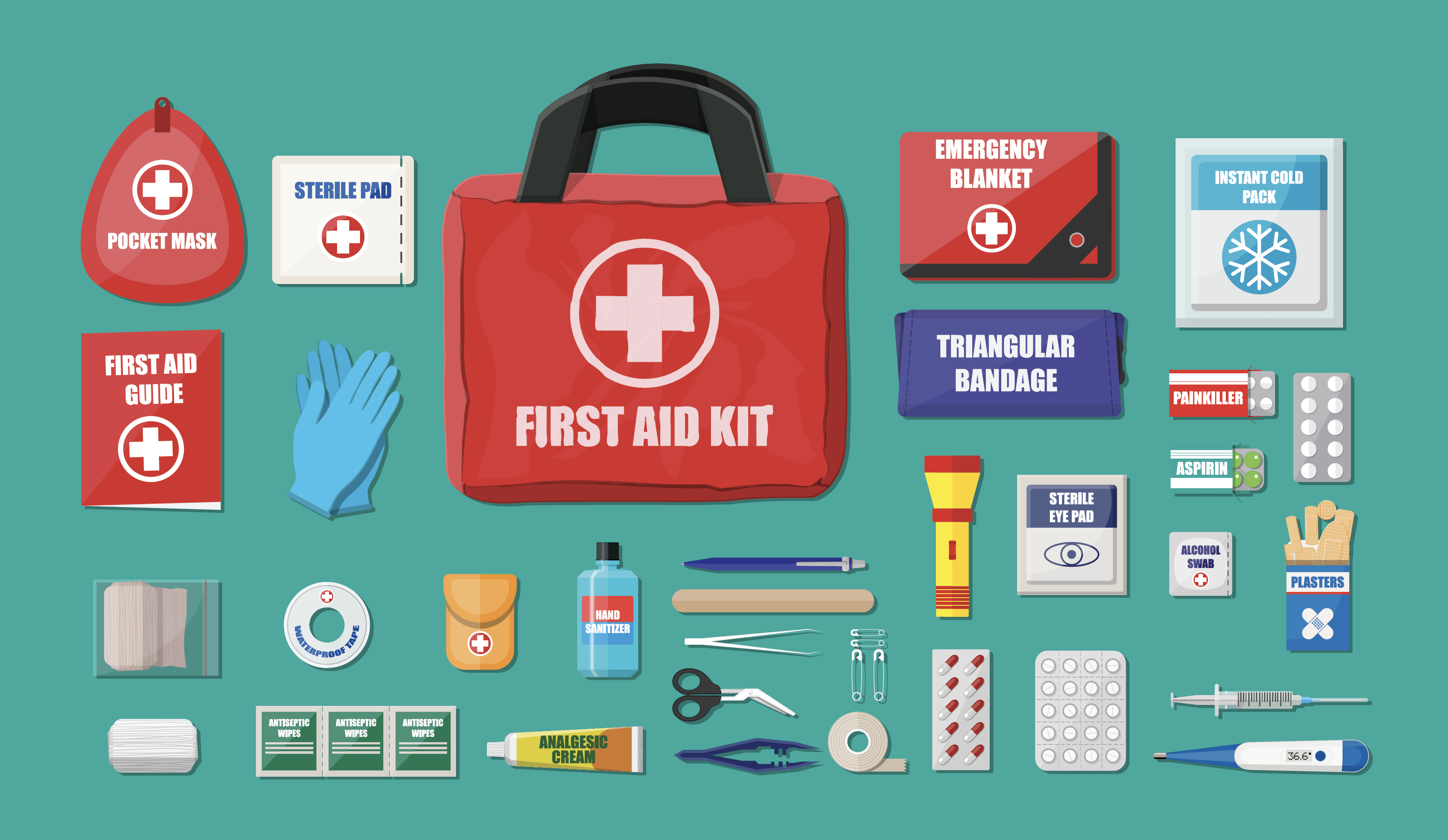By Chris Demeter, Senior Loss Control Consultant
When is the last time you had to use your first aid kit at home? Of like me, do you know where it is located at? About a month ago my wife was cutting up vegetables for dinner when she calls out “Could you please come in here now”. As I enter the kitchen, she is standing at the counter with a wad of paper towels around her finger. Me being the concerned husband asking the obvious “What did you do”? I cut my finger; could you please grab the first aid kit please? Where is it? It is in the bathroom under the sink. After securing the first aid kit and saving her finger, I ask “what time will dinner be done”? Needless to say, I finished dinner and cleaned up.
The Occupational Safety and Health Administration (OSHA) medical services and first aid regulation, 29 Code of Federal Regulations (CFR) 1910.151(b) states, “In the absence of an infirmary, clinic, or hospital in near proximity to the workplace which is used for the treatment of all injured employees, a person or persons shall be adequately trained to render first aid. Adequate first aid supplies shall be readily available.”
Most accounts that we visit have a first aid cabinet mounted on the wall with various supplies. I am often asked what types of items are required in our first aid cabinet? The American National Standards Institute (ANSI) and International Safety Equipment Association (ISEA) American National Standard—Minimum Requirements for Workplace First Aid Kits and Supplies (ANSI/ISEA Z308.1-2015)—establishes minimum performance requirements for first aid kits and their supplies. First aid kits are classified based on the assortment and quantity of first aid supplies intended to deal with most types of injuries and sudden illnesses that may be encountered in the workplace. These may include major and minor wounds, minor burns, sprains and strains, and eye injuries. As each work environment is unique, it is expected that the contents of each kit will be supplemented as needed based upon the recommendations of a person competent in first aid.
The non-mandatory 29 CFR 1910.151 Appendix A refers to ANSI Z308.1-1998, Minimum Requirements for Workplace First Aid Kits. Since Appendix A was added, ANSI has updated Z308.1 many times. The most recent edition was approved on June 17, 2015, with an effective date one year from that date.
Classification of First Aid Kits
The newest ANSI/ISEA standard introduces two classes of first aid kits: Class A and Class B. Class A kits are designed to deal with the most common types of workplace injuries. Class B kits are designed with a broader range and quantity of supplies to deal with injuries in more complex or high-risk environments.
Below is a table listing the minimum required components for both Class A and Class B kits. The assortment and quantity of supplies included in the kits were chosen based upon reviews of workplace incidents requiring first aid treatment, similar international standards and current injury treatment practices. The quantity and size specifications given are the minimum necessary to comply with the 2015 standard.

The kit containers are classified by portability, ability to be mounted, resistance to water, and corrosion and impact resistance. Four types are identified:
Type I: Intended for use in stationary, indoor applications where kit contents have minimal potential for damage due to environmental factors and rough handling. These kits are not intended to be portable and should have a means for mounting in a fixed position. Some applications for Type I first aid kits are general indoor use, office use or use in a manufacturing facility. First aid cabinets would generally fall into this type.
Type II: Intended for use in portable indoor applications where the potential for damage due to environmental factors and rough handling is minimal. These kits should be equipped with a carrying handle. Some applications for Type II first aid kits are general indoor use, or use in office or manufacturing environments.
Type III: Intended for portable use in mobile indoor and/or outdoor settings where the potential for damage due to environmental factors is not probable. Kits should have the means to be mounted and have a water resistant seal. Typical applications include general indoor use and sheltered outdoor use.
Type IV: Intended for portable use in mobile industries and/or outdoor applications where the potential for damage due to environmental factors and rough handling is significant. Typical applications include the transportation industry, utility industry, construction industry and the armed forces.
Specific requirements for unitized first aid kits have been removed from the Z308.1-2015 standard to emphasize the importance of the contents rather than the configuration. Unitized kits contain first aid supplies in uniform-sized, color-coded boxes as follows:
- Blue — Antiseptic
- Yellow — Bandages
- Red — Burn Treatment
- Orange — Personal Protective Equipment
- Green — Miscellaneous
When deciding the class and type of kit that may be most appropriate, employers should consider the risks that are present and the potential severity and likelihood of an incident. Based on the number of employees, physical layout of the facility and the remoteness to emergency services, employers should also consider whether multiple first aid kits are needed. These considerations also come into play when determining if a kit needs to be supplemented with additional supplies. The selection of these items should be based on the recommendation of a person competent in first aid who is aware of the hazards faced and the number of employees at the worksite.
Maintenance and Inspection
To ensure the completeness and usable condition of all supplies, first aid kits should be inspected and maintained on a regular basis. Some supplies may have expiration dates; any that are beyond that marked date should be replaced.
Marking and Labeling
All labels and markings must be legible and permanent. Each kit and/or location must be visibly marked. Each kit must also have a label with the following information presented, as applicable, in at least a six-point font:
Frequently Asked Questions
Q: Is a consulting physician required to approve first aid supplies on site?
A: No. According to 29 CFR 1910.151, first aid supplies do not need to be approved by a consulting physician. They should, however, be selected by a person competent in first aid and knowledgeable of the hazards found in the specific workplace.
Q: Is it required that first aid kits be regularly inspected to ensure that contents are complete and up to date?
A: Yes. First aid kits should be regularly inspected to ensure they are full, in good condition and that contents that have expiration dates have not expired. The contents list for the first aid kits should be periodically reviewed to ensure that it meets the needs of the workplace and hazards faced at all times.
Q: Can over-the-counter medicine be put in first aid kits?
A: Over-the-counter medicine can be put in first aid kits if packaged in single-dose, tamper-evident packaging and labeled as required by Food and Drug Administration (FDA) regulations. Over-the-counter drug products should not contain ingredients known to cause drowsiness.
Please remember that the Loss Control Department is here to assist you with any safety concerns or questions. I hope you have a safe and productive 2020.






